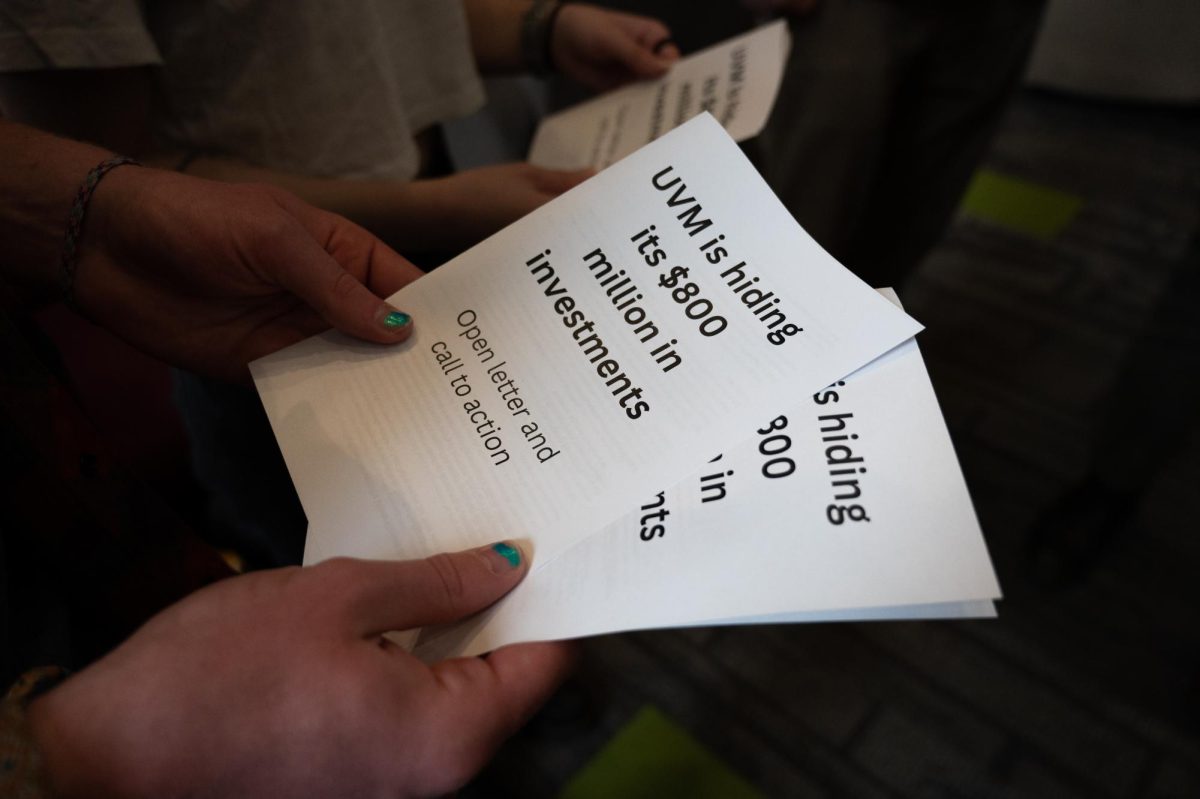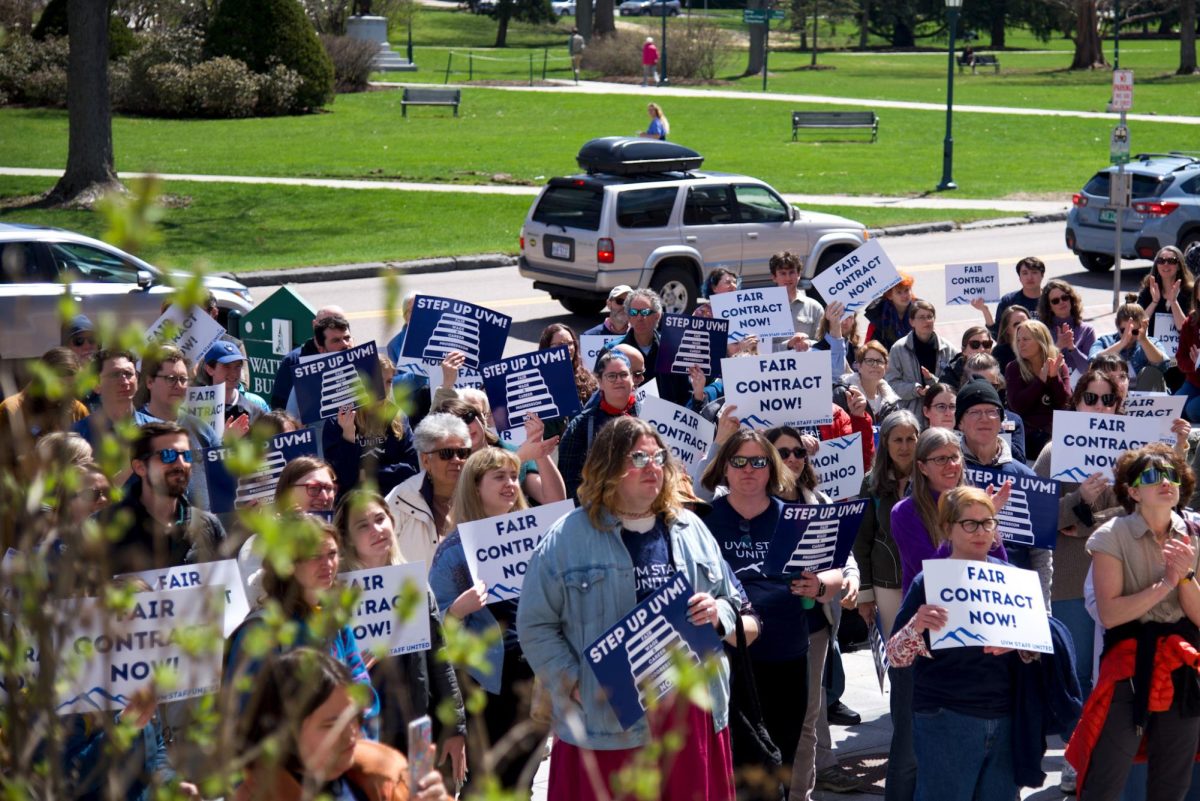Among the more visible changes that have occurred over the past year at the University of Vermont have been the implementation of joint-patrols coordinated between the Burlington Police Department and University of Vermont Police Services.
A resolution passed last year by Burlington residents gave UVM police officers the authority to issue citation for violations of Burlington city ordinances, such as those relating to noise levels, leash-laws, open containers and public urination, to name a few examples. Hitherto, UVM police had the ability to issue tickets for state-enforced laws, including felonies and misdemeanors, but had no authority over issues relating to city ordinances.
Since the second semester of the 2003 – 2004 academic year, UVM police services have routinely engaged in joint-patrols on weekend, focusing especially on the student-heavy Burlington Hill Section, particularly in the fall and spring months when students are most likely to be traveling around the township.
While this initiative has been praised by a number of Burlington residents, it has been met with some consternation by university students. As in most cases, there are a several different ways of looking at such issues, including how the initiative plays into the bigger scheme of university-city relations and cooperation in the future.
According to UVM Student Government Association president Bryant Jones, “police issues downtown have been an issue for at least the past two years. Last spring the citizens of Burlington passed a resolution to ask UVM Police Services to do joint-patrols with Burlington police. So this has been an issue with SGA for about a year now.” Among other aspects of the issue, Jones claims that “SGA is trying to find where the money for this operation is coming from. It could come from the Burlington Police Department, or it could come more directly from UVM, in which case, it will most likely come from the students.”
President Jones affirmed that the initiative has been met with enthusiasm by resident-advocacy groups such as the Neighborhood Action Project (NAP), which represents Loomis, Green and Hickhock Street. However, Jones feels that students are more questioning of it because they feel, by and large, that UVM police should be using their resources up on campus rather than in the downtown area.
Jones states, “one thing we’re doing as Student Government, is that we’ve created the Community Coalition, which is headed by Kelly Chamberlain who is the chair of the Committee on Legislative Action, and by Senator Bradey Fletcher. It’s bringing all the main people to the same table to talk about the problem. NAP does walks from midnight until 2 AM on Friday nights, but we don’t feel that those walks are productive because what they do is to point out some of the problems that have brought up the issue of having UVM police downtown, but don’t really pose any tangible solutions.”
Jones believes that it is important to bring landlords to the table for such discussions. While he feels that an initiative to try to get landlords to pay for part of the joint-patrols would be nearly impossible to obtain, he thinks it would be a good idea. Gary Margolis, director of UVM Police Services, feels that the issue of UVM police engaging in joint-patrols is an issue that has been building for a number of years. According to Margolis, “it started at the grassroots level in neighborhoods looking for solutions to the disruptive students and this is just one of the things that arose from it. It’s just one piece of the pie.”
Commenting upon the success of the joint-patrol initiative, Margolis states that “This year, so far we’ve had someone working every weekend when Burlington also had someone working. There were a couple of days during the last several weeks where joint-patrols didn’t happen because the Burlington Police Department was short-staffed.”
Margolis went on to assure that the increased cooperation between the two agencies does not mean that UVM police will provide police service to the city of Burlington or that there will be an increased presence of Burlington police officials on the University of Vermont campus. He states, “We’re talking more about the neighborhoods around the city. At times, we may not staff joint-patrols because our priority is on campus.” Furthermore, despite increased cooperation, Margolis affirmed that all revenue gained from city ordinance citations issued by UVM Police Services will go directly to the city of Burlington.
University of Vermont’s President Daniel Fogel sees the joint-patrol initiative as part of the larger vision of brining the University of Vermont and the city of Burlington closer together and making them more responsive to one anothers needs. He was not sure if there was a single impetus that led to this policy change, but states that it was probably in August of 2002 when the university first set afoot the notion of joint-patrols. Fogel believes that problems with quality-of-life issues around student behavior were more acute when he arrived in 2002.
The president affirms, “We have a strong interest in seeing a synergistic and mutually beneficial relationship between the university and the city of Burlington. We have and will continue to have a deep embeddedness in the community… These quality-of-life problems frequently occur whenever you have thousands of 18 to 23 year olds flooding into city neighborhoods. There are a lot of good things that can happen and there’s potential for some bad things to happen. Usually its the problems that get the attention.”
According to Fogel, among the more positive aspects of the increased cooperation between UVM Police Services and the city of Burlington, will be the city’s beefed-up advocacy for student safety. He states that, “also we have a strong interest in seeing that the city conducts its business in ways that are supportive of our students, that codes are enforced, that student housing is safe and not a firetrap.” Thus, president Fogel looks rather favorably upon the new initiative as it related to greater UVM-Burlington cooperation. “It’s part of the big puzzle.
In order to have the support that we need from the community to carry out the kinds of improvements that we want to carry out for the benefit of our students, we have to have them feel that we are on their side and that we’re going to guarantee the quality of community life and be participants in preserving a livable fabric of community.”
















